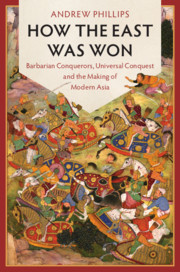Book contents
- How the East Was Won
- LSE International Studies
- How the East Was Won
- Copyright page
- Dedication
- Contents
- Maps
- Preface and Acknowledgements
- Introduction
- 1 From the Rise of the West to How the East Was Won
- 2 The Eurasian Transformation
- 3 The Rise of Asia’s Terrestrial Empires
- 4 European Infiltration and Asian Consolidation in Maritime Asia, 1600–1700
- 5 The Great Asian Divergence
- 6 The East India Company and the Rise of British India, 1740–1820
- 7 Crises of Empire and the Reconstitution of International Orders in South and East Asia, 1820–1880
- Conclusion
- References
- Index
Introduction
Published online by Cambridge University Press: 01 October 2021
- How the East Was Won
- LSE International Studies
- How the East Was Won
- Copyright page
- Dedication
- Contents
- Maps
- Preface and Acknowledgements
- Introduction
- 1 From the Rise of the West to How the East Was Won
- 2 The Eurasian Transformation
- 3 The Rise of Asia’s Terrestrial Empires
- 4 European Infiltration and Asian Consolidation in Maritime Asia, 1600–1700
- 5 The Great Asian Divergence
- 6 The East India Company and the Rise of British India, 1740–1820
- 7 Crises of Empire and the Reconstitution of International Orders in South and East Asia, 1820–1880
- Conclusion
- References
- Index
Summary
This chapter introduces the book’s central puzzle, makes the case for considering Western imperialism through systematic comparison with its Asian predecessors and contemporaries, and previews the book’s central argument. I argue that the literature on international hierarchy and empires has neglected critical parallels between Western and Asian empire-building in the early modern period. Mughal, Manchu and British empire-builders each confronted significant barriers to conquest, in the form of cultural marginality and demographic insignificance relative to indigenous majorities. Each consequently relied on strategies of define and conquer and define and rule to mobilize the vast multicultural coalitions needed for large-scale territorial expansion. These parallels in turn yielded empires that foregrounded the management of cultural diversity – through the incorporation of difference rather than its assimilation – as the chief feature of imperial rule.
- Type
- Chapter
- Information
- How the East Was WonBarbarian Conquerors, Universal Conquest and the Making of Modern Asia, pp. 1 - 21Publisher: Cambridge University PressPrint publication year: 2021

